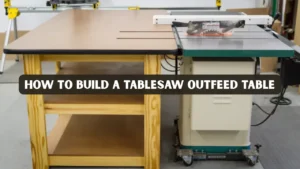Creating your own outdoor furniture is one of the most satisfying woodworking experiences. It blends creativity, craftsmanship, and practicality, allowing you to build pieces that suit your space perfectly. Whether you envision a relaxing garden bench, a stylish patio dining set, or a classic Adirondack chair, having reliable outdoor furniture plans is the foundation for success. A good plan provides precision, durability, and the satisfaction of turning raw materials into functional art.
Outdoor projects appeal to woodworkers of every skill level. For beginners, simple designs like tables or planter boxes offer a gentle introduction to joinery and finishing. For experienced builders, advanced plans such as modular seating or swings challenge creativity and craftsmanship. This guide explores how you can use outdoor furniture to design and build furniture that lasts, looks beautiful, and enhances any outdoor setting.
Why Outdoor Furniture Plans Matter
Outdoor furniture must endure the elements; sun, rain, humidity, and fluctuating temperatures. Without a structured plan, even the most inspired design can lack the strength and proportion required for long-term use. Quality outdoor furniture plans remove uncertainty by providing accurate measurements, clear assembly instructions, and detailed material lists. Each step is laid out, helping you avoid costly mistakes and unnecessary waste.
A well-crafted plan allows you to focus on building rather than guessing. It ensures joints fit snugly, angles align correctly, and every component contributes to structural stability. For beginners, it’s an invaluable learning tool to practice woodworking fundamentals like joinery and sanding. For professionals, following a plan guarantees consistency and efficiency when creating multiple identical pieces for clients or sets.
Essential Tools and Materials
Executing a furniture project requires dependable tools and the right materials. Accuracy begins with proper measuring instruments such as a carpenter’s square and tape measure. For cutting, a table saw or circular saw ensures clean edges, while a drill helps in creating holes and joinery points. Clamps play a vital role in holding pieces securely during assembly, and a sander provides the smooth finish every outdoor piece deserves.
Choosing suitable wood is equally important. Teak, cedar, redwood, and acacia are top options because of their natural resistance to moisture, decay, and insects. If these are unavailable, pressure-treated lumber can also work, provided it is sealed properly. When selecting screws or nails, stainless steel or galvanized hardware prevents rust and corrosion, essential for outdoor durability. Finishing products like stains and sealers add beauty while protecting the wood from weather damage. A well-applied coat of finish not only enhances color and grain but also extends the life of your furniture by several years.
Types of Outdoor Furniture
There are many types of outdoor furniture plans, each offering its own unique benefits and challenges. Adirondack chair plans are particularly popular because they combine simplicity with comfort. The slanted backrest and wide armrests make them ideal for relaxing outdoors. Some plans even include folding versions or double chairs, providing extra flexibility and storage options.
Outdoor table plans are another favorite, serving as the centerpiece for patios or backyards. They are perfect for family gatherings, meals, or entertaining guests. Depending on your preference, you can choose square, rectangular, or round designs. Some tables even include extensions or detachable legs to make transport and storage easier.
Garden benches add both functionality and charm to outdoor spaces. They can feature straight or curved-back designs, with some including storage beneath the seat for added practicality. Benches provide comfortable seating for lawns, gardens, or patios. They also create a welcoming atmosphere that enhances the overall look of your outdoor area.
Larger seating options, such as outdoor sofas or modular lounges, offer versatility and style. Modular sofas allow sections to be rearranged to fit any space perfectly. Planter boxes and storage benches are practical projects that combine beauty with utility. Many of these projects can be completed in just a weekend, making them ideal for both beginners and experienced woodworkers.
Step by Step Guide to Building Your Outdoor Furniture
The first step in any woodworking project is to study the plan carefully. Familiarize yourself with every part of the layout, including measurements, assembly diagrams, and materials. This preparation prevents errors during cutting and assembly. Once you understand the design, prepare your lumber by inspecting it for defects and warping. Proper selection ensures strength and stability.
Next, measure and cut each piece according to the plan. Mark your boards clearly before cutting to maintain accuracy. Once the components are ready, perform a dry fit assembling the parts without glue or screws to check alignment and fit. This step is crucial because it allows you to make corrections before final assembly. When everything aligns properly, use glue and fasteners to secure the joints. Clamps help maintain stability while the adhesive cures.
After assembly, sand every surface and edge to remove rough spots. The final step is finishing, where you apply stains or sealers for weather protection. Taking the time to sand and finish properly gives your furniture a professional look and protects it from moisture and sunlight.
Choosing the Perfect Project for Your Skill Level
Outdoor furniture projects vary in complexity, making it important to select the right one for your skill level. Beginners should start with simple pieces like small tables or stools that use basic cuts and straightforward joints. These projects help build confidence while teaching essential woodworking techniques. Starting with manageable designs allows you to develop skills without feeling overwhelmed.
Intermediate woodworkers can move on to more intricate projects, such as benches with curved backs or multi-part tables. These designs introduce advanced joinery techniques and require greater attention to detail. Working on moderately complex projects helps improve precision, problem-solving, and overall craftsmanship.
Advanced craftsmen often prefer modular or adjustable furniture, which demands careful planning and exact measurements. Before choosing a plan, it’s important to consider your tools, workspace, and available time. Selecting a project that aligns with your abilities ensures a productive and enjoyable building experience, resulting in furniture that is both functional and visually appealing.
Finishing and Protecting Your Outdoor Furniture
A high-quality finish is what sets professional craftsmanship apart from amateur work. Finishing enhances the wood’s natural beauty while providing essential protection against the elements. Begin by sanding all surfaces thoroughly to ensure smoothness and prepare the wood for staining or painting. Choose an outdoor-grade stain or paint that includes UV protection and water resistance for long-lasting results.
For a natural appearance, penetrating sealers are ideal as they soak into the wood and form a durable protective layer. If you prefer a more colorful look, use exterior paint designed specifically for wood surfaces. Apply several thin coats rather than a single thick layer to ensure better adhesion and longer-lasting protection. Allow the furniture to cure fully before exposure, and reapply the finish annually to maintain its beauty and durability.
Furniture Outdoor Plans for Every Style
No matter your design preference, there are outdoor furniture to suit every style. Rustic designs highlight the natural beauty of wood grain, raw textures, and traditional joinery. This approach gives your furniture a warm and timeless charm that blends with natural surroundings. Modern styles focus on clean lines and geometric forms, ideal for sleek patios or contemporary outdoor spaces.
Coastal-inspired furniture often uses lighter tones and slatted surfaces to create a breezy, relaxed feel. These designs are perfect for sunny decks and garden areas. By experimenting with different styles, you can mix elements to craft something unique. Combining rustic wood with metal accents, for example, balances tradition and innovation beautifully.
Customizing Your Outdoor Furniture
Customization adds a personal touch and creativity to every outdoor furniture project. Adjusting dimensions ensures that each piece fits perfectly in your space, whether it’s a small balcony or a large patio. Choosing different types of wood can change both the look and weight of the furniture. Features like built-in cup holders, sliding trays, or wheels can also improve functionality and convenience.
If comfort is a priority, consider adding waterproof cushions or designing adjustable backrests. Even small details, such as rounding edges, carving patterns, or engraving initials, give your furniture a unique character. Each modification allows you to showcase creativity while keeping the piece strong and durable. Ultimately, customization enhances both usability and personal expression in every project.
Cost and Budgeting Tips
One of the biggest advantages of using DIY furniture plans is the potential for significant cost savings. Building your own table, chair, or bench usually costs much less than buying pre-made furniture from a store. Wood and hardware are typically the most expensive materials, but purchasing in bulk or using reclaimed wood can lower costs without compromising quality. This approach allows you to enjoy high-quality, durable furniture while having the freedom to customize every detail.
When setting your budget, it’s important to include finishing supplies and optional additions like cushions or decorative elements. Never compromise on protective finishes, as they are essential for keeping your furniture weather-resistant and long-lasting. A well-built piece not only saves money but also provides enduring value. The satisfaction of creating something by hand adds a unique personal touch that cannot be replicated by store-bought furniture.
Sustainability and Eco-Friendly Wood Choices
Sustainable woodworking has become an essential part of modern craftsmanship. Selecting responsibly sourced materials helps reduce environmental impact while promoting ethical practices. Choosing lumber certified by the Forest Stewardship Council (FSC) ensures that your wood comes from forests managed with long-term sustainability in mind. You can also give new life to reclaimed wood from old furniture, barns, or construction sites, creating pieces that carry history and character.
Using water-based stains and low-VOC finishes not only enhances the beauty of your furniture but also minimizes exposure to harmful chemicals. These eco-friendly choices make your projects safer for both your home and the planet. When you prioritize sustainability, each creation becomes more than just functional; it reflects a commitment to responsible craftsmanship. Your furniture tells a meaningful story of creativity, care, and environmental respect that lasts for generations.
Expert Tips for Long-Lasting Results
Experts highlight preparation and maintenance as essential steps in extending the life of outdoor furniture. Using weather-resistant glue, such as polyurethane or epoxy-based adhesives, helps reinforce joints and improve durability. Elevating furniture slightly off the ground with rubber pads or metal feet prevents moisture from seeping into the wood. Regular care, including reapplying protective coatings at least once a year and checking for cracks or signs of wear, keeps your furniture in strong condition.
During extreme weather, storing furniture in a covered space or protecting it with breathable covers can prevent damage from moisture and temperature fluctuations. These small but consistent maintenance efforts preserve both the strength and appearance of your work. Over time, the attention you give to care and upkeep rewards you with furniture that stays sturdy, reliable, and visually appealing for many years.
Real-World Example
Consider the story of a craftsman who followed a detailed outdoor furniture plan to build a patio dining set. By adhering to precise measurements and assembly steps, he minimized waste and achieved a professional finish. The project took two weekends but resulted in a set that looked store-bought and cost far less. This example demonstrates how reliable plans can transform a complex project into an attainable and rewarding experience.
Conclusion
Building outdoor furniture is more than a pastime; it is a creative journey that blends craftsmanship with imagination. With reliable outdoor furniture plans, you can design and build pieces that add both beauty and functionality to your outdoor space. Each creation becomes a personal statement, reflecting your attention to detail and love for woodworking. Whether it’s a cozy bench beneath a tree or a stylish dining set for family gatherings, every project tells a story of effort and passion.
Choosing the right materials, applying weather-resistant finishes, and following detailed instructions are essential for durability and lasting appeal. Proper planning ensures that every joint, cut, and coat of finish contributes to a sturdy final product. The time invested in preparation and precision pays off through years of comfort, pride, and satisfaction. Building with intention not only enhances your skills but also brings a sense of accomplishment that only handmade furniture can offer.
FAQs
What is the best wood for outdoor furniture?
Teak, cedar, and redwood are among the most durable woods for outdoor use because they resist moisture and insects naturally.
Can indoor furniture plans be used outdoors?
It’s better to use plans specifically designed for outdoor furniture since they account for exposure to sunlight, humidity, and expansion.
How long does it take to build outdoor furniture?
A simple project might take a few hours, while larger sets can span several days, depending on your pace and complexity.
Are free plans reliable?
Many free plans are accurate and helpful, but always review them for clear measurements and sturdy joinery instructions before starting.
How can I make my outdoor furniture waterproof?
Use sealers, varnishes, or waterproof stains, and reapply them annually to maintain protection.




